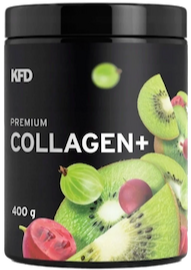Home remedies for knee pain: effective and natural methods
See simple and effective knee pain remedies you can do at home.


Learn more about our editorial process
.

Learn more about our editorial process
.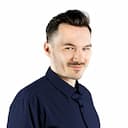

Learn more about our editorial process
.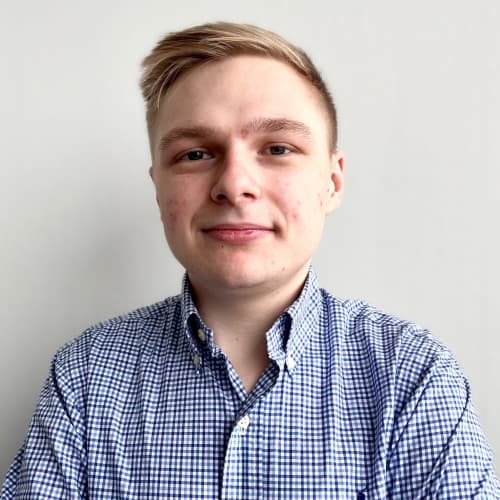

Learn more about our editorial process
.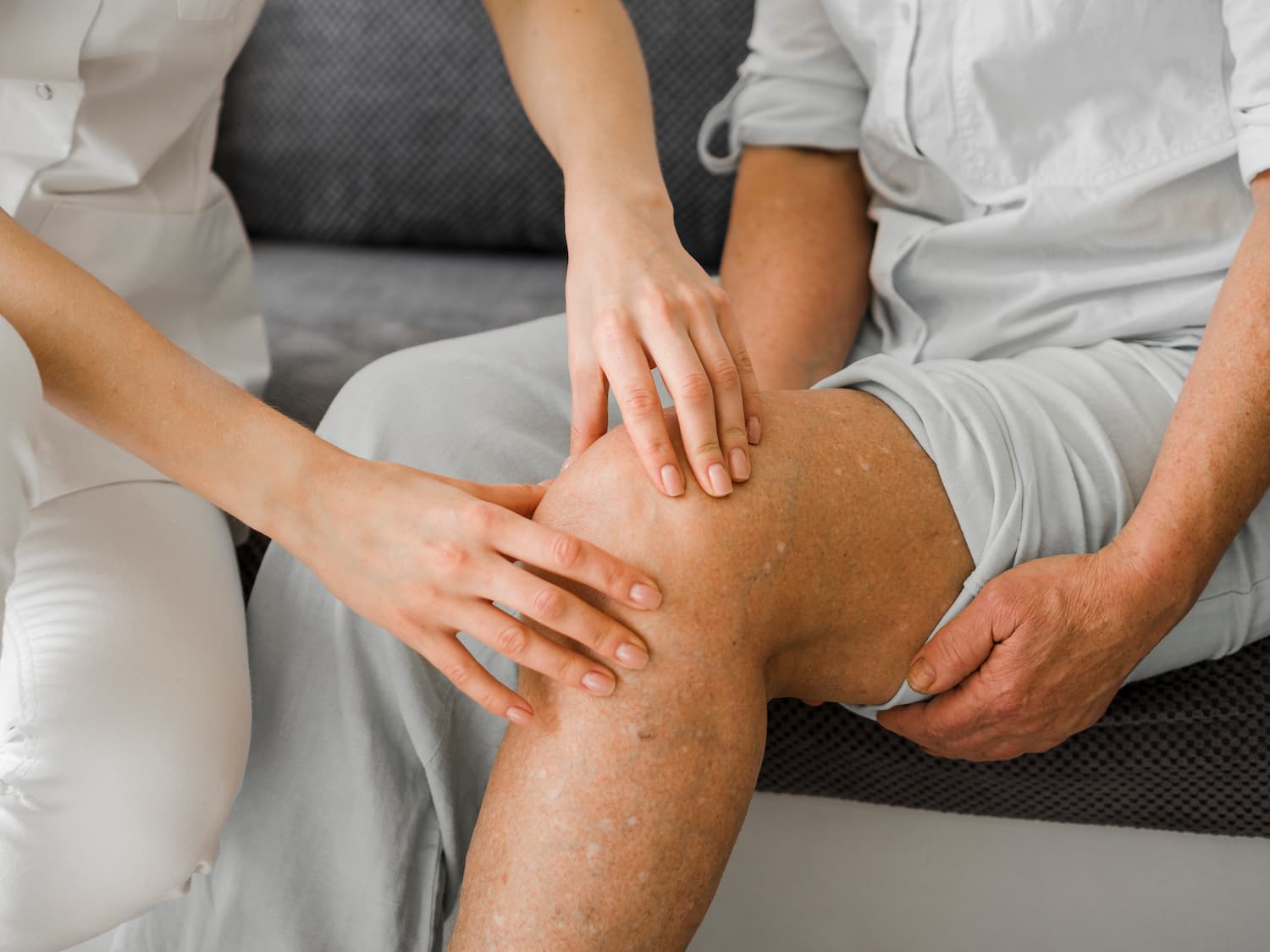
Why you can trust us
Articles on Natu.Care are written based on scientific research, data from government websites and other reliable sources. The texts are written in cooperation with doctors, nutritionists and other health and beauty experts. Articles are reviewed before publication and during significant updates.
.Learn more about our editorial process
.Information about advertisements
Content on Natu.Care may contain links to products from the sale of which we may receive a commission. When creating content, we adhere to high editorial standards and take care to be objective about the products discussed. The presence of affiliate links is not dictated by our partners, and we select the products we review ourselves completely independently.
.Learn more about our terms and Conditions
.Simple, proven and effective home remedies for knee pain. Find out they exist and are a great alternative to oral painkillers.
Knee pain is a really bothersome ailment and NSAIDs are not very kind to the stomach. That's why it's worth trying other methods that can bring you relief. Especially as most of them are trivially simple and basically free.
.
From this article you will learn:
- Why your knees hurt. .
- When to go to the orthopaedist with knee pain. .
- Which home remedies are the most effective.
- What is the most effective.
- What prevention looks like for musculoskeletal health. .

Sprawdź, za co pokochały go tysiące klientek Natu.Care Premium Omega-3ᵀᴳ -15% z kodem BLOG15
Natu.Care Omega-3ᵀᴳ Premium
Natu.Care Omega-3ᵀᴳ Premium dla zdrowia serca, mózgu i odporności. Najlepsza przyswajalność. Optymalna dawka 750 mg. Przebadana przez niezależne laboratorium.
Zobacz więcej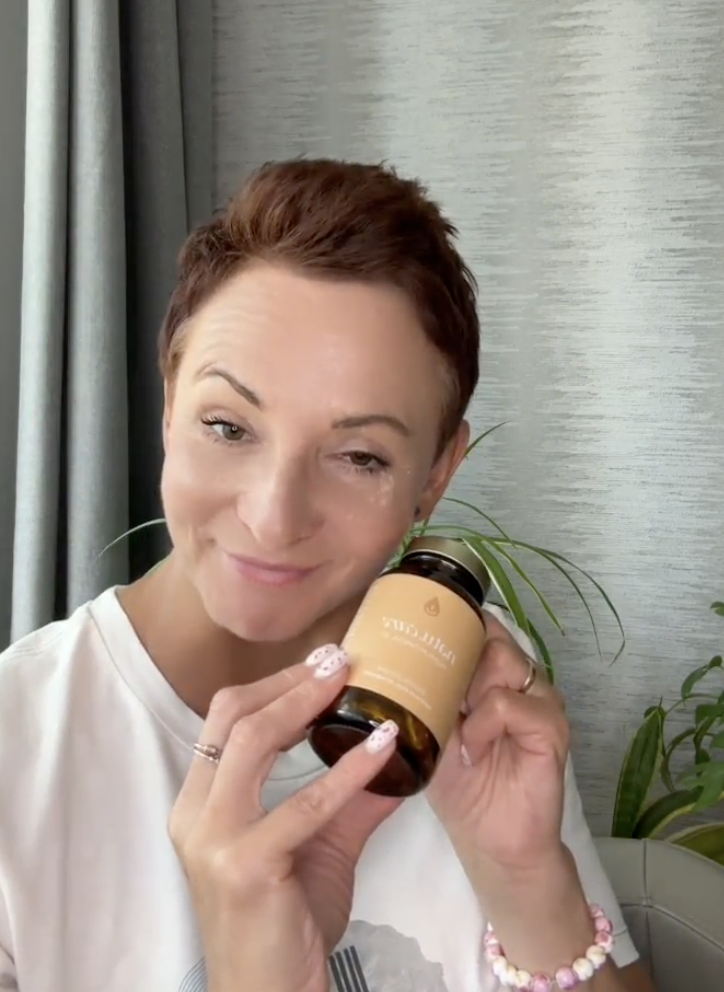
Produkt ma super skład, transparentną etykietę i co dla mnie jest ważne – małe kapsułki do połknięcia. Nie ma też nieprzyjemnego efektu odbijania rybą, który miałam spożywając inne produkty. Widzę znaczną poprawę odporności. Polecam!@Kasia P.
See also:
.
- All about knee pain .
- Grandmother's ways for joints
- Tennis elbow
- Golfer's elbow
- Rheumatoid arthritis (RA) .
- Gonarthrosis
Why do knees hurt?
.
The causes of knee pain are not infrequently important when choosing a treatment that can give you relief. The knee may hurt as a result ofand:
- injury, .
- degenerative changes, .
- systemic diseases (e.g. RA), .
- postural defects,
- posture defects
- cysts and ganglions, .
- rolling inflammation (usually associated with one of the above causes). .
In young people, injuries are responsible for most cases of knee pain, while in older people, degenerative changes are responsible.
When to see a doctor?
.
Not every knee pain has to end with a visit to the orthopaedist. If there has been a simple contusion and the mobility of the joint is preserved, it will probably be enough if you use home remedies for knee pain.
If, however, there is no need to visit an orthopaedic surgeon.
If, however, there is swelling at the site of the injury or you feel that the knee is not moving as it should, do not wait to see your doctor. You may have sprained, cracked or broken a bone or torn a ligamentand. Similarly, a visit to a specialist will be necessary if the pain persists for several days.
Effective home remedies for knee pain
.
Home remedies for knee pain include cabbage compresses, cold compresses, properly selected exercises and pain relief ointments. For pain associated with strain, resting and relieving pressure on the knee will help. Pain associated with swelling can be relieved by holding the knee above heart level.
Wraps for knee pain
.
Ice packs are one of the most popular methods of dealing with pain and swelling. Ba, it is recommended by doctors themselves, often as part of therapy for injuries. In many cases, knee pain is associated with inflammation. It occurs with virtually all injuries, and can develop in the course of progressive degeneration or with exacerbations of rheumatic diseasesand.
.
Cold reduces the sensitivity of pain receptors, lowers the temperature of the inflamed area and blocks the secretion of substances that are responsible for it. Under the influence of low temperature, blood vessels shrink, which effectively helps to fight swellingand.
It is important never to apply ice directly to the skin. This can cause frostbite. Wrap the ice cubes in a cloth and only apply to the knee as it is. Keep the compress on for about 15 minutes and repeat the compresses every 2-3 hours until the swelling has reduced or disappeared.
After the first compress, the application time can also be increased to 30 minutes if the cooling effect was insufficient..

Kacper Nihalani doctor
.
In addition to cold, ... cabbage can also help you. This is no joke - cabbage leaf compresses really do work, and scientific studies confirm this. Among other things, the juice of this plant contains glucosinolates and specific types of ribonucleic acid, which have anti-inflammatory and analgesic effectsand.
Better than ointments
.A 2022 study found that when it came to reducing osteoarthritis pain, cabbage wraps performed better than diclofenac analgesic and anti-inflammatory ointment .
.
To make a cabbage poultice, prepare a large cabbage leaf and a bandage or knee brace. Crush the leaf with a meat pestle so that it starts to release its juice. Place it on the knee and wrap it with a bandage or put on an elastic stabiliser. Remember not to attach the leaf too tightly so as not to disrupt circulation in the limb.
.
Collagen for sore knees
.
Will taking collagen after an injury help reduce your knee pain? No. It definitely doesn't work that way. Regular collagen supplementation can instead help you strengthen the structures of your knee joint, which may involveand:
- reducing the risk of serious knee injury, .
- slowing the degenerative process, .
- reduction of stiffness of the knee joint, .
- reduction of pain accompanying arthritis, .
Collagen is the main building block of articular cartilage and ligaments, important components of the knee joint. It also supports the production of joint lubricant and increases tissue elasticityand. Therefore, if you want to keep your knees in good condition, it is worth considering supplementation with this protein.
Natu.Care Collagen Premium 5000 mg, mango-maracuja
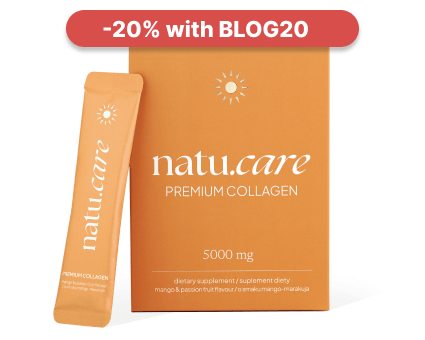
- Collagen content: 5000 mg marine collagen hydrolysate
- .
- Additional active ingredients: vitamin C, low molecular weight hyaluronic acid (and L-theanine and coenzyme Q10 in cocoa flavoured collagen or vitamin A and vitamin E in mango–passion fruit flavoured collagen)
- .
- Form: powder sachets
- .
- Dose: 1 sachet per day
- .
- Sufficient for: 30 days
- .
Product description
Fish collagen from the Natu.Care brand in a dose of 5000 mg. The formula contains a sufficient portion of the active substance to positively affect your joints, musculoskeletal system and immunity.
Take care of your tendons, joint cartilage, ligaments, muscles and even bones by supplying them with the building blocks to function properly. Move without bólu and provide the necessary support for any physical activity.
And as a „gratis” to regular supplementation, you will also receive firm skinóhand, healthy and shiny hair and strong nails.
Natu.Care Premium Collagen is available in two flavours – Cacao Bloom and Rise&Shine. Both formulas are based on the following active ingredients: marine collagen hydrolysate, wild roseóbud extract and hyaluronic acid.
Additionally, Cacao Bloom contains natural L-theanine, coenzyme Q10 and defatted Dutch cacao. Rise&Shine instead contains vitamin E and vitamin A.
These are the best collagens in the world.
These best fish collagens on the market also rós taste – Cacao Bloom is a treat for chocolate lovers. Rise&Shine will appeal to those whoóenjoy the refreshing taste of mangoófruit and passion fruit.
Pros and cons
Fish collagen from the Natu.Care brand in a dose of 5000 mg. The formula contains a sufficient portion of the active substance to positively affect your joints, musculoskeletal system and immunity.
Take care of your tendons, joint cartilage, ligaments, muscles and even bones by supplying them with the building blocks to function properly. Move without bólu and provide the necessary support for any physical activity.
And as a „gratis” to regular supplementation, you will also receive firm skinóhand, healthy and shiny hair and strong nails.
Natu.Care Premium Collagen is available in two flavours – Cacao Bloom and Rise&Shine. Both formulas are based on the following active ingredients: marine collagen hydrolysate, wild roseóbud extract and hyaluronic acid.
Additionally, Cacao Bloom contains natural L-theanine, coenzyme Q10 and defatted Dutch cacao. Rise&Shine instead contains vitamin E and vitamin A.
These are the best collagens in the world.
These best fish collagens on the market also rós taste – Cacao Bloom is a treat for chocolate lovers. Rise&Shine will appeal to those whoóenjoy the refreshing taste of mangoófruit and passion fruit.
Additional information
Fish collagen from the Natu.Care brand in a dose of 5000 mg. The formula contains a sufficient portion of the active substance to positively affect your joints, musculoskeletal system and immunity.
Take care of your tendons, joint cartilage, ligaments, muscles and even bones by supplying them with the building blocks to function properly. Move without bólu and provide the necessary support for any physical activity.
And as a „gratis” to regular supplementation, you will also receive firm skinóhand, healthy and shiny hair and strong nails.
Natu.Care Premium Collagen is available in two flavours – Cacao Bloom and Rise&Shine. Both formulas are based on the following active ingredients: marine collagen hydrolysate, wild roseóbud extract and hyaluronic acid.
Additionally, Cacao Bloom contains natural L-theanine, coenzyme Q10 and defatted Dutch cacao. Rise&Shine instead contains vitamin E and vitamin A.
These are the best collagens in the world.
These best fish collagens on the market also rós taste – Cacao Bloom is a treat for chocolate lovers. Rise&Shine will appeal to those whoóenjoy the refreshing taste of mangoófruit and passion fruit.
User review
Fish collagen from the Natu.Care brand in a dose of 5000 mg. The formula contains a sufficient portion of the active substance to positively affect your joints, musculoskeletal system and immunity.
Take care of your tendons, joint cartilage, ligaments, muscles and even bones by supplying them with the building blocks to function properly. Move without bólu and provide the necessary support for any physical activity.
And as a „gratis” to regular supplementation, you will also receive firm skinóhand, healthy and shiny hair and strong nails.
Natu.Care Premium Collagen is available in two flavours – Cacao Bloom and Rise&Shine. Both formulas are based on the following active ingredients: marine collagen hydrolysate, wild roseóbud extract and hyaluronic acid.
Additionally, Cacao Bloom contains natural L-theanine, coenzyme Q10 and defatted Dutch cacao. Rise&Shine instead contains vitamin E and vitamin A.
These are the best collagens in the world.
These best fish collagens on the market also rós taste – Cacao Bloom is a treat for chocolate lovers. Rise&Shine will appeal to those whoóenjoy the refreshing taste of mangoófruit and passion fruit.
Natu.Care Collagen Premium 10000 mg, cherry
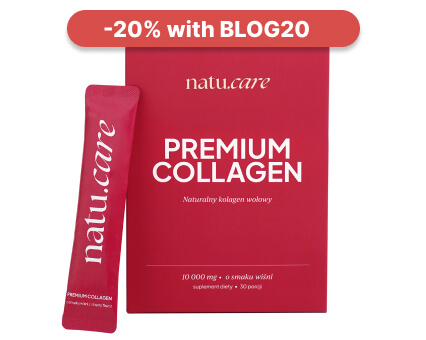
- Collagen content: 10,000 mg of hydrolyzed bovine collagen
- Additional active ingredients: vitamin C, low molecular weight hyaluronic acid, glucosamine, chondroitin, extract of Indian frankincense resin (boswellia serrata)
- Form: powder sachets for drinking
- Serving: 1 sachet per day
- Lasts for: 30 days
Product description
One of the strongest collagens on the market, providing as much as 10,000 mg per daily serving. This product can effectively support the condition of joints, skin, hair, and nails.
With this supplement, you will support your skeletal and joint system as well as your beauty, helping you visually halt the aging process and feel rejuvenated!
Pros and cons
Pros:
- The daily portion of collagen is very large – as much as 10,000 mg.
- Proven collagen formula – COLLinstant, whose effectiveness has been confirmed in clinical studies.
- Effective dose of hyaluronic acid, which additionally moisturizes the skin and positively affects joint health.
- Vitamin C supports the body's natural collagen production.
- Glucosamine is a fundamental building block of compounds found in joint cartilage and a component of collagen that gives elasticity to connective tissue in tendons.
- Chondroitin is a natural component found in the human body, mainly in cartilage. This large molecule (mucopolysaccharide) has the ability to absorb water, which helps maintain the elasticity and resilience of cartilage.
- Frankincense resin extract supports blood circulation and joint mobility and reduces their stiffness. It may help alleviate inflammatory conditions.
- The composition has been tested by the independent and accredited J.S. Hamilton laboratory.
Cons:
- None.
Additional information
Users praise Natu.Care Collagen Premium for the easy dissolving of the powder.
ALLDEYNN Collarose Fish
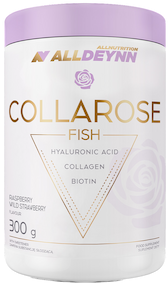
- Collagen content: 5000 mg hydrolysate fish collagen VERISOL F® .
- Additional active ingredients: vitamin C, hyaluronic acid, biotin
- Form: powder to dissolve in water .
- Dose: one scoop (6 g) of powder daily .
- Sufficient for: 50 days .
Product description
Atlantic cod collagen VERISOL F® contained in the formula are easily absorbed collagen peptides of fish origin. Regular supplementation can firm your skinóhand and slow down the ageing process. Your nails will become stronger and stop breaking. The addition of biotin will improve the condition of your hairów. The collagen portion is high enough to also have a good effect on your joints, muscles and bones.
Pros and cons
Atlantic cod collagen VERISOL F® contained in the formula are easily absorbed collagen peptides of fish origin. Regular supplementation can firm your skinóhand and slow down the ageing process. Your nails will become stronger and stop breaking. The addition of biotin will improve the condition of your hairów. The collagen portion is high enough to also have a good effect on your joints, muscles and bones.
Additional information
Atlantic cod collagen VERISOL F® contained in the formula are easily absorbed collagen peptides of fish origin. Regular supplementation can firm your skinóhand and slow down the ageing process. Your nails will become stronger and stop breaking. The addition of biotin will improve the condition of your hairów. The collagen portion is high enough to also have a good effect on your joints, muscles and bones.
Expert and user opinion
Atlantic cod collagen VERISOL F® contained in the formula are easily absorbed collagen peptides of fish origin. Regular supplementation can firm your skinóhand and slow down the ageing process. Your nails will become stronger and stop breaking. The addition of biotin will improve the condition of your hairów. The collagen portion is high enough to also have a good effect on your joints, muscles and bones.
DuoLife Collagen fish collagen 2500 mg
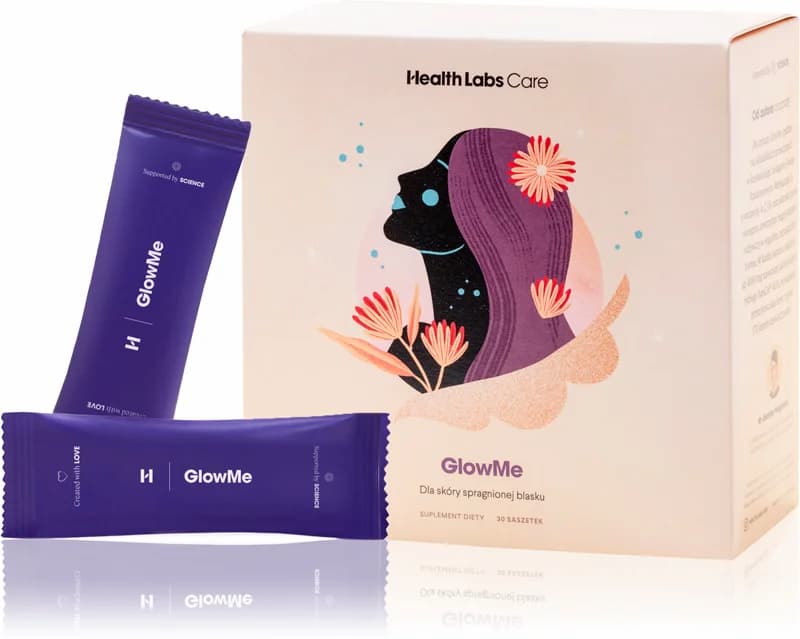
- Collagen content: 2500 mg collagen
- Additional active ingredients: vitamin C, silicon, glucosamine, hyaluronic acid, nettle and bamboo extracts
- Form: liquid to drink .
- Dose:25 ml .
- Sufficient for: 30 days .
Product description
100% natural collagen liquid without unnecessary ingredientsós. The composition of ingredientsós improves the appearance and condition of skinóry, hairów, nails. DuoLife is a good choiceór if you notice the first signs of skinóry ageing or want to stop this process. A tasty liquid, convenient to use.
Pros and cons
100% natural collagen liquid without unnecessary ingredientsós. The composition of ingredientsós improves the appearance and condition of skinóry, hairów, nails. DuoLife is a good choiceór if you notice the first signs of skinóry ageing or want to stop this process. A tasty liquid, convenient to use.
Additional information
100% natural collagen liquid without unnecessary ingredientsós. The composition of ingredientsós improves the appearance and condition of skinóry, hairów, nails. DuoLife is a good choiceór if you notice the first signs of skinóry ageing or want to stop this process. A tasty liquid, convenient to use.
User review
100% natural collagen liquid without unnecessary ingredientsós. The composition of ingredientsós improves the appearance and condition of skinóry, hairów, nails. DuoLife is a good choiceór if you notice the first signs of skinóry ageing or want to stop this process. A tasty liquid, convenient to use.
Pharmovit liquid collagen 10000 mg
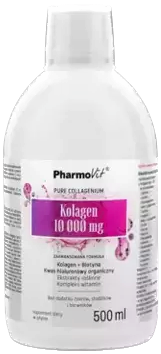
- Collagen content: 10000 mg hydrolysed bovine collagen types I and III .
- Additional active ingredients: hyaluronic acid, natural plant extracts, vitamin C, B vitamins, zinc, vitamin D
- Form: vials .
- Dose: 25 ml .
- Sufficient for: 20 days .
Product description
A solid daily dose of collagen for jointómuscle and bone health and beauty. The duo of collagen and vitamin C has a positive effect on each other, so that „the protein of youth” is better absorbed and more efficiently produced in the body.
Pros and cons
A solid daily dose of collagen for jointómuscle and bone health and beauty. The duo of collagen and vitamin C has a positive effect on each other, so that „the protein of youth” is better absorbed and more efficiently produced in the body.
Additional information
A solid daily dose of collagen for jointómuscle and bone health and beauty. The duo of collagen and vitamin C has a positive effect on each other, so that „the protein of youth” is better absorbed and more efficiently produced in the body.
KFD Premium Collagen+
Product description
High dose of collagen and a real bomb of vitamins C and D and organic sulphur. With this preparation the effects will come immediately. You will improve the firmness of your skin and reduce wrinkles. Your hair and nails will be strong and shiny.
A generous dose of collagen will improve the mobility of your jointsós, benefit your bone system and muscles. Do you do sports and need a product thatós able to keep up with your needs? This product will do the trick.
Pros and cons
High dose of collagen and a real bomb of vitamins C and D and organic sulphur. With this preparation the effects will come immediately. You will improve the firmness of your skin and reduce wrinkles. Your hair and nails will be strong and shiny.
A generous dose of collagen will improve the mobility of your jointsós, benefit your bone system and muscles. Do you do sports and need a product thatós able to keep up with your needs? This product will do the trick.
Additional information
High dose of collagen and a real bomb of vitamins C and D and organic sulphur. With this preparation the effects will come immediately. You will improve the firmness of your skin and reduce wrinkles. Your hair and nails will be strong and shiny.
A generous dose of collagen will improve the mobility of your jointsós, benefit your bone system and muscles. Do you do sports and need a product thatós able to keep up with your needs? This product will do the trick.
Expert opinion
High dose of collagen and a real bomb of vitamins C and D and organic sulphur. With this preparation the effects will come immediately. You will improve the firmness of your skin and reduce wrinkles. Your hair and nails will be strong and shiny.
A generous dose of collagen will improve the mobility of your jointsós, benefit your bone system and muscles. Do you do sports and need a product thatós able to keep up with your needs? This product will do the trick.
Product description
The dietary supplement from Remé contains beef collagen in a patented formula and vitamin C, whichóra aids its absorption. The formula comes in three flavours: neutral, orange-maracuja and strawberry-pomegranate. The formula can effectively support and improve the condition of the skinóry, hairóry and nails.
Pros and cons
The dietary supplement from Remé contains beef collagen in a patented formula and vitamin C, whichóra aids its absorption. The formula comes in three flavours: neutral, orange-maracuja and strawberry-pomegranate. The formula can effectively support and improve the condition of the skinóry, hairóry and nails.
Additional information
The dietary supplement from Remé contains beef collagen in a patented formula and vitamin C, whichóra aids its absorption. The formula comes in three flavours: neutral, orange-maracuja and strawberry-pomegranate. The formula can effectively support and improve the condition of the skinóry, hairóry and nails.
The dietary supplement from Remé contains beef collagen in a patented formula and vitamin C, whichóra aids its absorption. The formula comes in three flavours: neutral, orange-maracuja and strawberry-pomegranate. The formula can effectively support and improve the condition of the skinóry, hairóry and nails.
.
See also:
.
Knee pain rubs and ointments
.
In the pharmacy you will find many ointments with analgesic and anti-inflammatory effects, to buy without a prescription. Their application is very easy (you just need to rub it on the painful area), which can help you to function on a daily basis.
It is worth remembering, however, that ointments usually only act as a means of masking the symptoms - they do not remove the cause. So if your knee pain is due to a more serious condition, it's worth starting treatment aimed at eliminating it, rather than just suppressing the symptoms.
If your knee pain is due to a more serious condition, it's worth starting treatment aimed at eliminating it, rather than just suppressing the symptoms.
Another popular treatment for knee pain is to take vinegar. Vinegar has antibacterial properties, but apart from disinfecting your knee...it doesn't seem to work on either the pain or the inflammation.
Exercises for knee pain
.
Besides ice packs, this is probably the most effective method for knee pain. However, it needs to be implemented at the right time. Don't start exercising while you still have swelling and active inflammation on your knee. Equally, hold off if you are fresh from an injury - give the joint structures time to healand.
Exercises to offset knee pain are primarily those focused on strengthening the quadriceps muscle of the thigh. This muscle helps to stabilise the knee and relieves pressure on its structures. In this way, it not only prevents injury and reduces strain-related discomfort, but also assists with arthritis-related painand.
The simplest exercise you can do to strengthen the quadriceps of the thigh is leg extensions with a weight:
.
- .
- Sit in such a position that your knees are bent at a right angle.
- Sit in such a position that your knees are bent at a right angle.
- Place weights on your ankles. .
- Slowly straighten your legs and bend them back. .
Like cycling? Great! This is another way to train your quadriceps. Set the saddle at such a height that full leg extension occurs when you pedal. Et voila!
How much exercise to achieve the desired effect? Experts recommend doing the above activities for at least three hours a week. You can stagger this as much as you like, such as exercising three times for an hour each or six times for 30 minutes each.
The most important thing is prevention
.
The worst enemy of your musculoskeletal system (including your knees) is a sedentary lifestyle and lack of physical activity. This causes muscle weakness, making your joints more prone to injury, even from harmless falls and stumbles.
Daily walking, cycling or any recreational sport:
.
- improves motor coordination, .
- strengthens the musculoskeletal system, .
- stimulates collagen and elastin production, .
- oxidises the body, .
- increases joint and muscle mobility, .
So if you want to stay in shape for years to come, you need to get moving.
.
Of course, you should also pay attention to your diet - avoid processed foods and excess red meat. Instead, increase the amount of vegetables, fruit and unsaturated fatty acids you eat - for example, in the form of fish, which will provide you with omega-3 acids.
These acids have anti-inflammatory properties, so may be particularly valuable if your knee pain is due to rheumatic diseases such as RA)and.
{ product:6CizQVnfcf40wNfjQkeJ5o }}
.
Prevention also includes avoidance of risk factors in rheumatic diseases. These include smoking, prolonged stress or eating pro-inflammatory foods (e.g. large amounts of sugar)and.

Sprawdź, za co pokochały go tysiące klientek Natu.Care Premium Omega-3ᵀᴳ -15% z kodem BLOG15
Natu.Care Omega-3ᵀᴳ Premium
Natu.Care Omega-3ᵀᴳ Premium dla zdrowia serca, mózgu i odporności. Najlepsza przyswajalność. Optymalna dawka 750 mg. Przebadana przez niezależne laboratorium.
Zobacz więcej
Produkt ma super skład, transparentną etykietę i co dla mnie jest ważne – małe kapsułki do połknięcia. Nie ma też nieprzyjemnego efektu odbijania rybą, który miałam spożywając inne produkty. Widzę znaczną poprawę odporności. Polecam!@Kasia P.
Summary
.
- Knee pain can have a variety of causes, but proven home remedies can help with most of them.
- Cold compresses and exercises to strengthen the quadriceps muscle of the thigh are the most effective in treating knee pain.
- The most effective ways to treat knee pain are cold compresses and exercises to strengthen the quadriceps muscle of the thigh.
- Cabbage leaf compresses can be useful in relieving swelling and inflammation, and pain relief ointments can help you with daily activities. .
- To prevent knee injuries and joint disease, prevention is important, i.e. regular physical activity, which you can support with collagen supplementation. .
FAQ
.How to get rid of knee pain quickly
.Apply cold compresses to the knee for 15 minutes every 2-3 hours to reduce swelling and relieve pain. Avoid prolonged standing or walking. If possible, try to keep your leg above heart level. This will help to reduce swelling. Take painkillers and anti-inflammatory medication - as prescribed by your doctor.
What are compresses made of for knee pain?
.Apply ice packs to the knee. Ice reduces swelling and relieves pain by constricting blood vessels and slowing blood flow to the joint. Use a bag of ice cubes wrapped in a towel, applying it to the knee for 15-20 minutes every 2-3 hours.
Alternatively, use a cabbage leaf compress. Break up the leaf so that it starts to release its juice and apply to the painful knee. Attach with a bandage or elastic stabiliser to the knee and wear for about 3 hours.
.How to make an apple cider vinegar poultice for the knee.
Make an apple cider vinegar poultice for your knee by following these steps:
- Dilute the apple cider vinegar with water in a ratio of 1:1. For example, use 1/2 cup of vinegar and 1/2 cup of water.
- Dilute the apple cider vinegar with water in a ratio of 1:1.
- Soak a clean cloth or bandage in this mixture. .
- Wrap the knee with the soaked cloth or bandage. .
- Hold for about 20-30 minutes, then remove the wrap and wash the knee with warm water. .
Apple vinegar compresses are popular for treating joint pain, but evidence of their effectiveness is lacking.
What is the best position for the knee to rest in?
.The best position for resting the knee is lying down with the leg raised and slightly bent: simply lie comfortably on your back, place a pillow or roller under the knee so that the leg is raised above heart level.
The best position for resting the knee is lying down with the leg raised and slightly bent: simply lie down on your back, place a pillow or roller under the knee so that the leg is raised above heart level.
Relevating the leg helps to reduce swelling by facilitating fluid drainage, which speeds up the healing process. This position also minimises pressure on the knee joint, which can help to alleviate pain.
Lift the leg.
Is it okay to warm up a sore knee?
.Warming up a sore knee is not recommended because, paradoxically, it can exacerbate pain. Heat dilates the blood vessels and relaxes the muscles, which is advisable for pains caused by excessive muscle tension. Warming compresses are most commonly used for back pain.
.On the other hand, cold compresses are recommended for knee joint pain. The low temperature reduces the sensitivity of pain receptors and helps to calm inflammation and reduce swelling.
How to heal inflammation in the knee
.The standard treatment for inflammation in the knee joint is a combination of cold compresses and oral anti-inflammatory and analgesic (NSAID) drugs. For extremely resistant inflammation, steroid therapy can also be used, which is usually administered by an orthopaedic surgeon by injection.
Is walking good for the knees?
.Yes, walking is good for the knees. It is a low-impact physical activity that helps strengthen the muscles that support the knees, which in turn increases stability and reduces stress on the joints.
Walking is also worth adding exercises to strengthen the leg muscles. This will benefit the health of your knees, as stronger muscles can better support and protect your joints. Regular walking also helps to maintain a healthy body weight, which is key to joint health, as being overweight can increase pressure on the knees.
Sources
.See all
.Bello, A. E., & Oesser, S. (2006). Collagen hydrolysate for the treatment of osteoarthritis and other joint disorders:a review of the literature. Current Medical Research and Opinion, 22(11), 2221-2232. https://doi.org/10.1185/030079906X148373
Campbell Orthopaedic Surgery Volume 1, S. Terry Canale, James H. Beaty. (n.d.). MediPage Medical Publishing. Retrieved December 7, 2023, from https://medipage.pl/pl/p/Campbell-Ortopedia-Operacyjna-TOM-1%2C-S.-Terry-Canale%2C-James-H.-Beaty/2774
Chang, C.-K., Chen, P.-K., Chen, C.-C., Chang, S.-H., Chen, C.-H., & Chen, D.-Y. (2021). Increased Levels of Omega-3 Fatty Acids and DHA Are Linked to Pain Reduction in Rheumatoid Arthritis Patients Treated with Janus Kinase Inhibitors. Nutrients, 13(9), Article 9. https://doi.org/10.3390/nu13093050
Chobpenthai, T., Arunwatthanangkul, P., & Mahikul, W. (2022). Efficacy of Cabbage Leaf versus Cooling Gel Pad or Diclofenac Gel for Patients with Knee Osteoarthritis: A Randomized Open-Labeled Controlled Clinical Trial. Pain Research and Management, 2022, e3122153. https://doi.org/10.1155/2022/3122153
Clark, K. L., Sebastianelli, W., Flechsenhar, K. R., Aukermann, D. F., Meza, F., Millard, R. L., Deitch, J. R., Sherbondy, P. S., & Albert, A. (2008). 24-Week study on the use of collagen hydrolysate as a dietary supplement in athletes with activity-related joint pain. Current Medical Research and Opinion, 24(5), 1485-1496. https://doi.org/10.1185/030079908x291967
Dawczynski, C., Dittrich, M., Neumann, T., Goetze, K., Welzel, A., Oelzner, P., Völker, S., Schaible, A. M., Troisi, F., Thomas, L., Pace, S., Koeberle, A., Werz, O., Schlattmann, P., Lorkowski, S., & Jahreis, G. (2018). Docosahexaenoic acid in the treatment of rheumatoid arthritis: A double-blind, placebo-controlled, randomised cross-over study with microalgae vs. sunflower oil. Clinical Nutrition (Edinburgh, Scotland), 37(2), 494-504. https://doi.org/10.1016/j.clnu.2017.02.021
Duong, V., Oo, W. M., Ding, C., Culvenor, A. G., & Hunter, D. J. (2023). Evaluation and Treatment of Knee Pain: A Review. JAMA, 330(16), 1568-1580. https://doi.org/10.1001/jama.2023.19675
Gioia, C., Lucchino, B., Tarsitano, M. G., Iannuccelli, C., & Di Franco, M. (2020). Dietary Habits and Nutrition in Rheumatoid Arthritis: Can Diet Influence Disease Development and Clinical Manifestations? Nutrients, 12(5), Article 5. https://doi.org/10.3390/nu12051456
Hunter.
Hunter, C. W., Deer, T. R., Jones, M. R., Chang Chien, G. C., D'Souza, R. S., Davis, T., Eldon, E. R., Esposito, M. F., Goree, J. H., Hewan-Lowe, L., Maloney, J. A., Mazzola, A. J., Michels, J. S., Layno-Moses, A., Patel, S., Tari, J., Weisbein, J. S., Goulding, K. A., Chhabra, A., ... Strand, N. (2022). Consensus Guidelines on Interventional Therapies for Knee Pain (STEP Guidelines) from the American Society of Pain and Neuroscience. Journal of Pain Research, 15, 2683-2745. https://doi.org/10.2147/JPR.S370469
Kasarello, K., Köhling, I., Kosowska, A., Pucia, K., Lukasik, A., Cudnoch-Jedrzejewska, A., Paczek, L., Zielenkiewicz, U., & Zielenkiewicz, P. (2022). The Anti-Inflammatory Effect of Cabbage Leaves Explained by the Influence of bol-miRNA172a on FAN Expression. Frontiers in Pharmacology, 13. https://www.frontiersin.org/articles/10.3389/fphar.2022.846830
Knee Pain in Adults and Adolescents: the Initial Evaluation | AAFP. (n.d.). Retrieved December 7, 2023, from https://www.aafp.org/pubs/afp/issues/2018/1101/p576.html
LeVasseur, M. R., Mancini, M. R., Berthold, D. P., Cusano, A., McCann, G. P., Cote, M. P., Gomlinski, G., & Mazzocca, A. D. (2021). <p>Acromioclavicular Joint Injuries: Effective Rehabilitation</p>. Open Access Journal of Sports Medicine, 12, 73-85. https://doi.org/10.2147/OAJSM.S244283
Martínez-Puig, D., Costa-Larrión, E., Rubio-Rodríguez, N., & Gálvez-Martín, P. (2023). Collagen Supplementation for Joint Health: The Link between Composition and Scientific Knowledge. Nutrients, 15(6), 1332. https://doi.org/10.3390/nu15061332
Orthopaedics and Traumatology Volume 1-2. (n.d.). PZWL Medical Bookshop. Retrieved December 7, 2023, from https://pzwl.pl/Ortopedia-i-traumatologia-Tom-1-2,4964653,p.html
Sciascia, A., Bois, A. J., & Kibler, W. B. (2022). Nonoperative Management of Traumatic Acromioclavicular Joint Injury: A Clinical Commentary with Clinical Practice Considerations. International Journal of Sports Physical Therapy, 17(3), 519-540. https://doi.org/10.26603/001c.32545
Zdzieblik, D., Brame, J., Oesser, S., Gollhofer, A., & König, D. (2021). The Influence of Specific Bioactive Collagen Peptides on Knee Joint Discomfort in Young Physically Active Adults: A Randomized Controlled Trial. Nutrients, 13(2), 523. https://doi.org/10.3390/nu13020523
.
Editorials
Meet the team


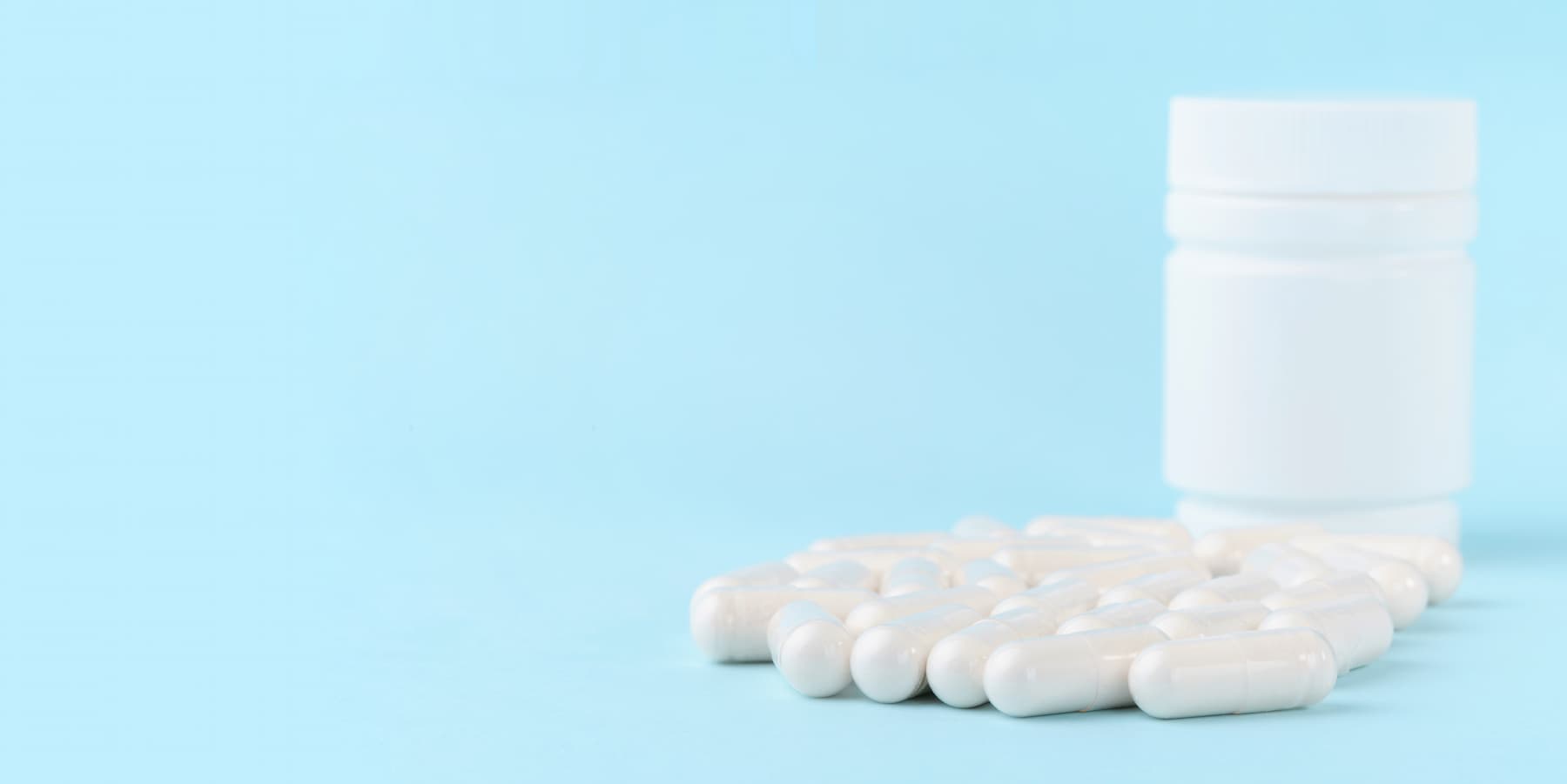
Chondroitin helps the joints and other elements of the body.
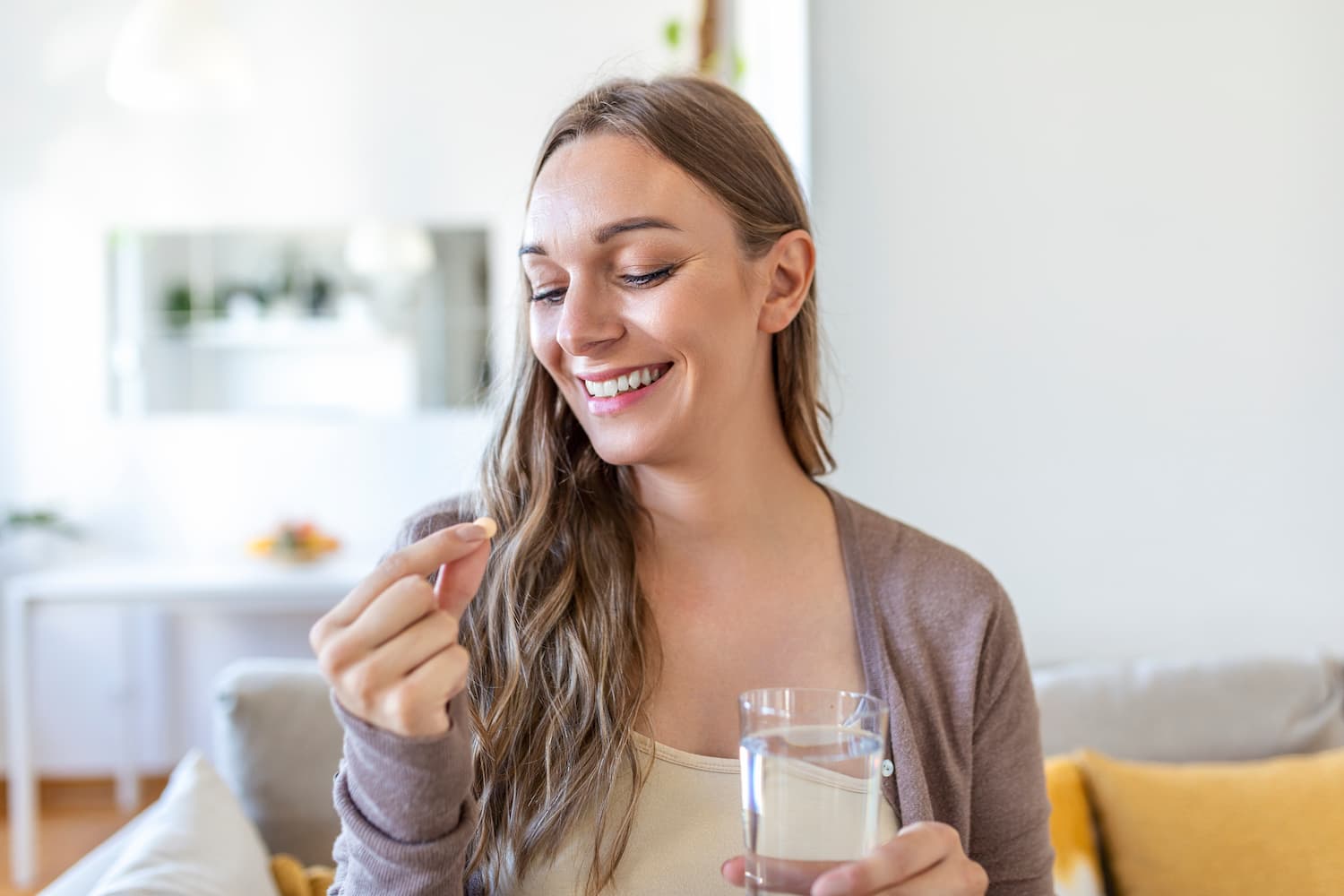
Glutathione is one of the most potent antioxidants for supporting the body's health. Find out how it works and where to get it from.
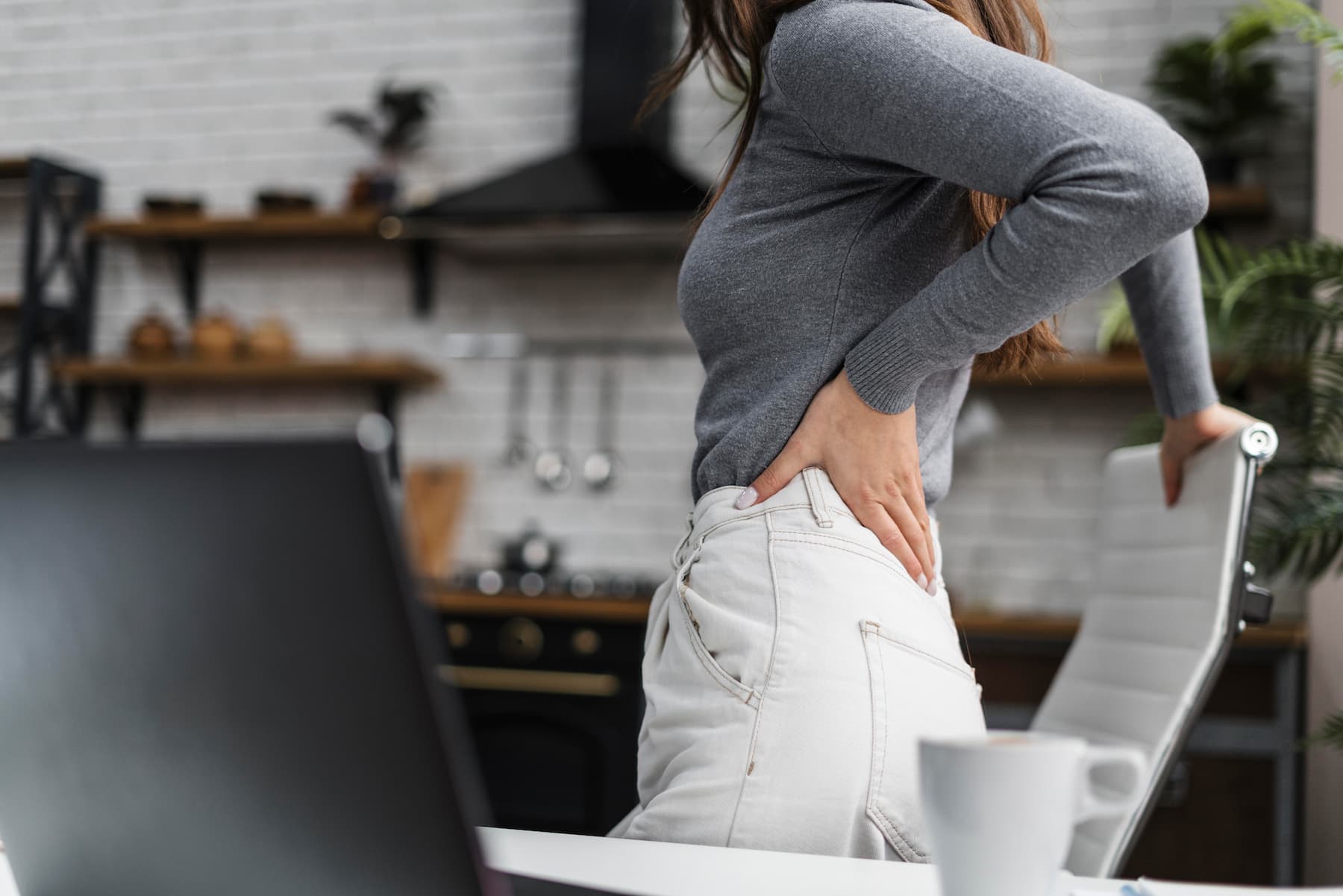
See why hip joints hurt and how to treat their ailments.
